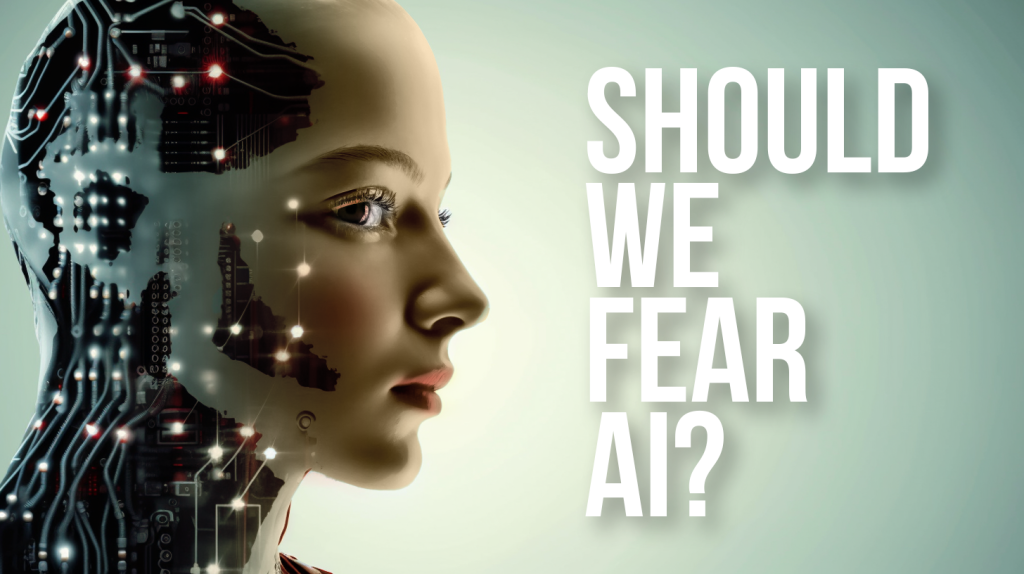When Henry Ford introduced the assembly line, he revolutionized manufacturing. Production sped up dramatically — and suddenly, factories needed far fewer workers. People resisted. Some even wanted to burn down the factories. But once the machine started rolling, there was no turning back.
Before cars, 70% of people used horses for transport. Within a few decades, horses went from essential to obsolete — and eventually, to a luxury niche.
History repeats itself. The telephone, the pager, and the smartphone each reshaped society. We gained connection, convenience, and information — but lost something, too: privacy, independence, and a slower pace of life.
And now, AI is the next great shift. Like every technological leap before it, it inspires both awe and fear.
The Dangers of AI
One growing concern is the so-called “dead internet theory” — the idea that the web is increasingly populated by bots instead of humans. Today, over half of online activity already comes from automated systems. With AI, this could accelerate. We may soon see social media flooded with AI-generated posts, comments, and even full personas.
If human attention is the true currency of the internet, AI-generated “slop” — endless, soulless content — could erode its value. Traditional creative industries may shrink as algorithms churn out content faster and cheaper than any person can.
But fear, as real as it feels, can also cloud judgment. To understand it, we need to look at how our brains react to uncertainty.
Why We Fear AI: A Neuroscientific View
Fear of new technology often comes from the amygdala, the part of the brain that responds to threats and uncertainty. When we feel something might strip us of control or identity, the amygdala fires off — triggering anxiety, defensiveness, or even hostility.
Common fears around AI include:
- Loss of control – “What happens when machines make the decisions?”
- Privacy invasion – “Who’s watching what I do?”
- Diminishment of human value – “If AI can do my job, what am I worth?”
These are not irrational concerns. They’re deeply human.
When we see AI writing articles, designing websites, or composing music, we might feel something existential — a sense that our creativity is being replaced. This “death of the author” effect can make us feel small in comparison to the algorithms we created.
Behavioral and Emotional Symptoms
Unchecked fear of AI can lead to a set of behavioral and emotional responses:
- Avoidance – Refusing to use new tools or platforms
- Criticism – Rejecting change on principle
- Withdrawal – Reducing social or professional engagement involving tech
- Preoccupation – Constantly worrying about being replaced
These reactions can harm mental health and stunt adaptation — especially among older adults or professionals whose industries are evolving rapidly.
When fear blocks learning, people get left behind. The world keeps moving forward, and those who freeze in place risk obsolescence — much like the horse in Ford’s story.
The Limitations of AI: Lying With Confidence
AI’s greatest flaw isn’t that it’s wrong — it’s that it’s confidently wrong.
Imagine an AI-generated research article that’s 80% correct and 20% false. That misinformation, once published, spreads. Cited, reshared, and embedded into new AI models, it multiplies like a virus.
Before AI, the internet was already struggling with truth. Now, distinguishing fact from fiction could become nearly impossible.
AI often sounds intelligent — but there’s no consciousness behind its words. It’s a sophisticated hammer, not a mind. Yet many people treat it like an oracle.
That blind trust is dangerous.
Still, this limitation may fuel a counter-movement: renewed appreciation for human-made work. Authentic, handcrafted design and storytelling may become badges of honor — proof that a human heart and mind were involved.
Overcoming the Fear of AI
Fear can be reprogrammed, just like a bad habit.
Here are some proven psychological and NLP-based techniques to manage AI-related anxiety:
- Anchoring: Associate a calm state (like deep breathing) with a physical gesture. Use it whenever fear arises.
- Reframing: Instead of seeing AI as a threat, view it as a tool — one that expands human potential rather than replaces it.
- Exposure: Gradually engage with AI tools. Familiarity reduces fear.
By reframing the narrative, we shift from resistance to resilience — from fear to curiosity.
The Benefits of Embracing AI
Those who adapt gain the most:
- Reduced anxiety when engaging with AI environments
- Improved creativity, by using AI as a collaborator, not a competitor
- Greater opportunities, from productivity to innovation
- Empowerment, through responsible and informed use
Embracing AI doesn’t mean blind trust. It means learning its strengths, acknowledging its flaws, and wielding it wisely.
Conclusion: AI Is a Tool, Not a Threat
AI isn’t coming for humanity — it’s coming with humanity. It’s a tool, not a tyrant. Like the assembly line or the smartphone, it will reshape society — but how we respond determines whether it lifts us or leaves us behind.
The future belongs to those who overcome fear, learn to adapt, and lead the change.
AI is inevitable. Resistance is futile. But growth — that’s optional. Choose it.
